Today my diary and information about fruit plants
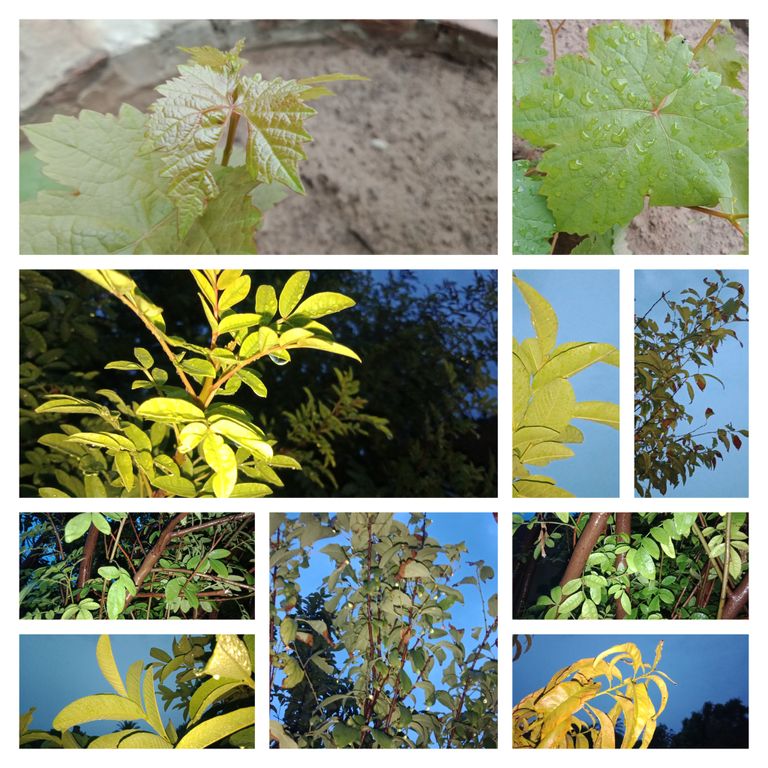
The pepper plant is now three years old and after one year it will start bearing fruit as it bears its first fruit after at least four years. A lot of hard work has been developed for this plant. During rains it becomes a bit difficult to handle because its branches and leaves are heavy and the weight increases due to raindrops. Draw pictures of plants.
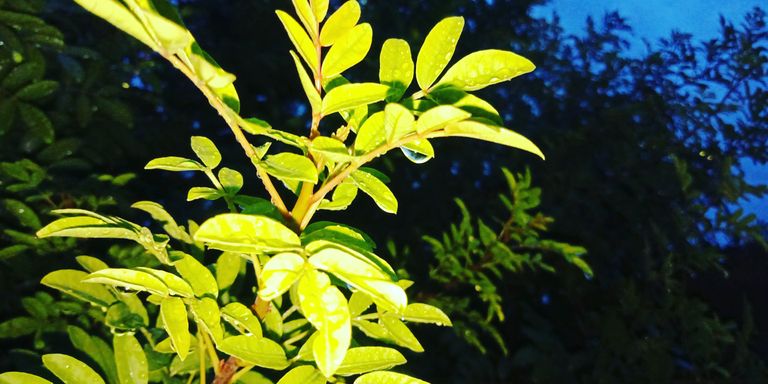
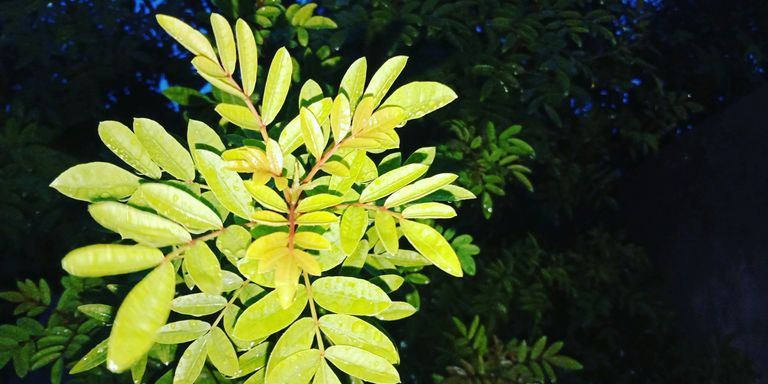
کالی مرچ کا پودا اب تین سال کا ہو چکا ہے اور ایک سال کے بعد پھل دینا شروع کر دے گا کیونکہ یہ کم از کم چار سال بعد پہلا پھل دیتا ہے۔
اس پلانٹ کے لیے بہت محنت کی گئی ہے۔ بارش کے دوران اسے سنبھالنا قدرے مشکل ہو جاتا ہے کیونکہ اس کی شاخیں اور پتے بھاری ہوتے ہیں اور بارش کی بوندوں سے وزن بڑھ جاتا ہے۔ پودوں کی تصویریں بنائیں
Red Henna
It is a red colored henna plant, its leaves are similar in shape to black pepper leaves, its leaves are dried to make henna, which is mostly used in wedding ceremonies and it is pure henna. It is because it does not contain any kind of adulteration and is prepared from natural plant leaves. We have used henna prepared from this plant many times and it is very popular.
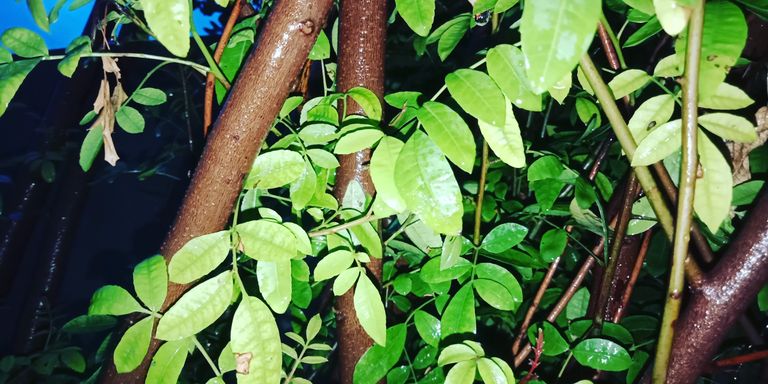

یہ ایک سرخ رنگ کا مہندی کا پودا ہے، اس کے پتے کالی مرچ کے پتوں سے ملتے جلتے ہیں، اس کے پتوں کو مہندی بنانے کے لیے خشک کیا جاتا ہے، جو زیادہ تر شادی بیاہ کی تقریبات میں استعمال ہوتا ہے اور یہ خالص مہندی ہے۔ اس کی وجہ یہ ہے کہ اس میں کسی قسم کی ملاوٹ نہیں ہوتی اور یہ قدرتی پودوں کے پتوں سے تیار کی جاتی ہے۔ ہم نے اس پودے سے تیار ہونے والی مہندی کو کئی بار استعمال کیا ہے اور یہ بہت مشہور ہے۔
Damson
This is a small plant of Aloo Bukhara. Next month, in the second week of July, it will be two years old. Alhamdulillah, this plant has been transplanted with a very high quality. This time, the first fruit was produced on it from the top of the plant. The main feature is that this is the only type of potato plant whose fruit is sweet and juicy even when raw. Otherwise, most of the potatoes are cut and sour even when they are ripe. God willing, it will bear fruit again in winter.
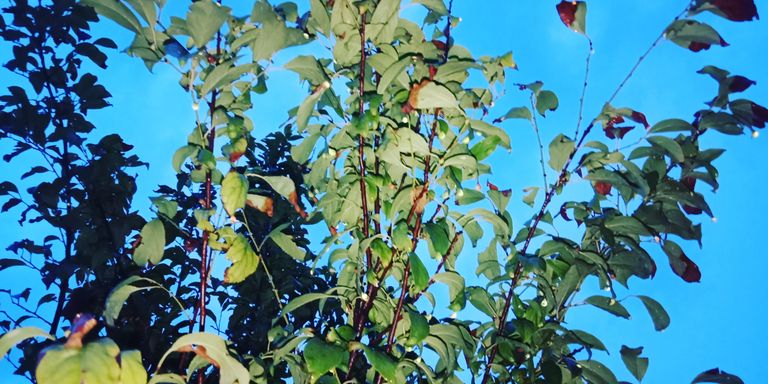
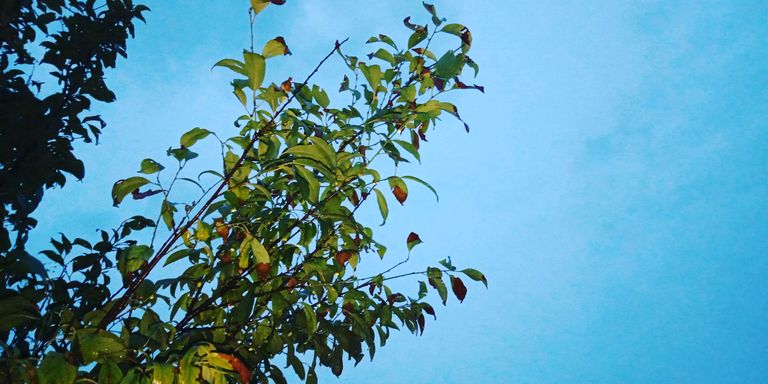
یہ آلو بخارا کا چھوٹا سا پودا ہے۔ اگلے ماہ جولائی کے دوسرے ہفتے میں دو سال کا ہو جائے گا۔ الحمدللہ یہ پودا بہت اعلیٰ معیار کے ساتھ لگایا گیا ہے۔ اس بار پودے کے اوپر سے اس پر پہلا پھل آیا۔ اہم خصوصیت یہ ہے کہ یہ آلو کے پودے کی واحد قسم ہے جس کا پھل کچا ہونے کے باوجود میٹھا اور رسیلا ہوتا ہے۔ ورنہ زیادہ تر آلو پکنے پر بھی کٹے اور کھٹے ہوتے ہیں۔ انشاء اللہ سردیوں میں دوبارہ پھل آئے گا۔
Guava
This is a native guava plant, its fruit is similar to the shape of a sarahi and inside its fruit is red in color. This plant has also reached the age of two years and this plant was only seven months old when it started bearing fruit. Often the fruit is eaten before it is ripe because children like to eat guava fruit. The pictures of this plant are also taken during the rainy season.
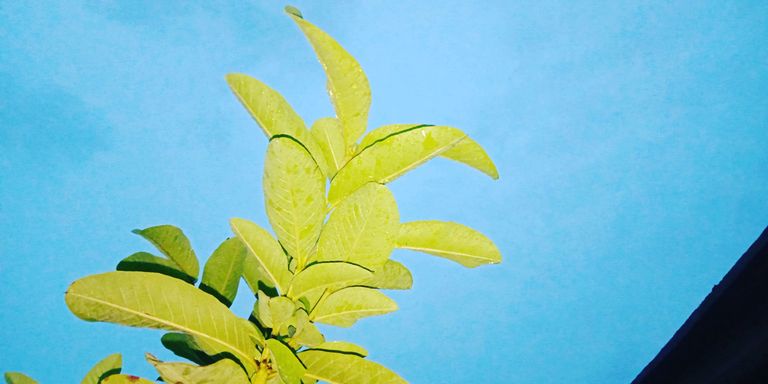
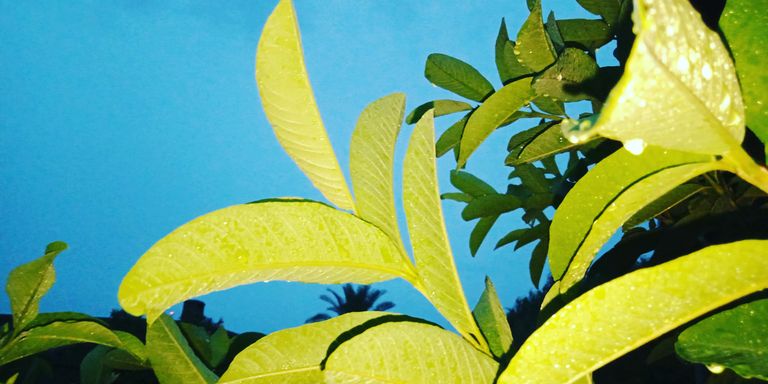
یہ امرود کا دیسی پودا ہے، اس کا پھل سراہی کی شکل کا ہوتا ہے اور اس کے پھل کے اندر سرخی مائل ہوتی ہے۔
یہ پودا بھی دو سال کی عمر کو پہنچ چکا ہے اور یہ پودا صرف سات ماہ کا تھا جب اس نے پھل دینا شروع کیا۔
اکثر پھل کو پکنے سے پہلے کھا لیا جاتا ہے کیونکہ بچے امرود کا پھل کھانا پسند کرتے ہیں۔ اس پودے کی تصاویر بھی برسات کے موسم میں لی گئی ہیں۔
Peaches 🍑🍑 are a rare gift they are mostly found in hilly and green areas. Last year my friend gifted me this peach plant. The fruit was definitely less, but peaches with the shape and size of apples grew on it, and the height of this plant is only five feet, but seeing the fruits on top of it, one is surprised that it is not an imitation plant, but Alhamdulillah this is a real plant and I like it very much.
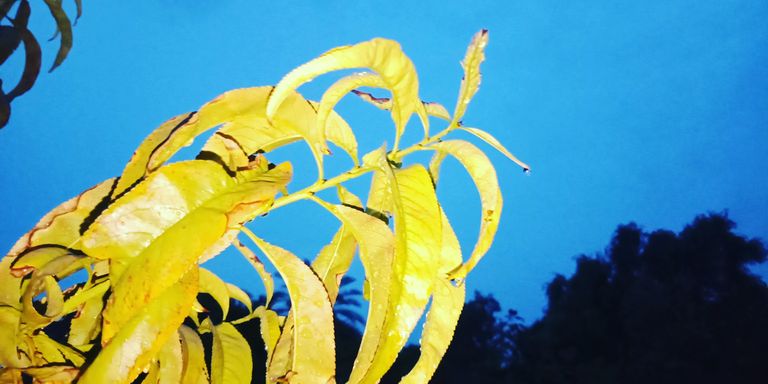
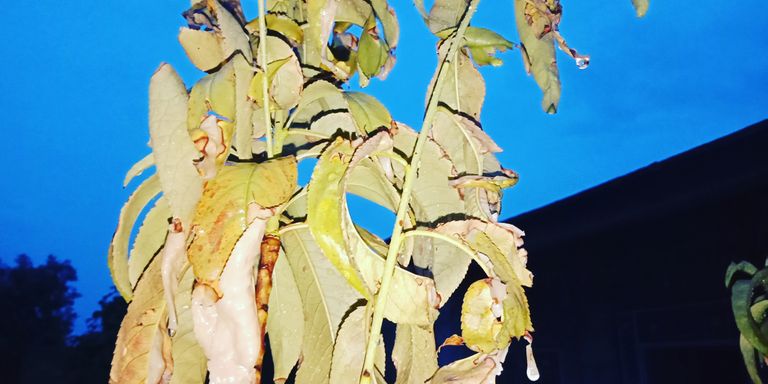
آڑو 🍑🍑 ایک نایاب تحفہ ہے جو زیادہ تر پہاڑی اور سر سبز علاقوں میں پایا جاتا ہے۔ پچھلے سال میرے دوست نے مجھے یہ آڑو کا پودا تحفے میں دیا تھا۔ پھل ضرور کم تھا لیکن اس پر سیب کی شکل اور جسامت کے ساتھ آڑو اگ گیا اور اس پودے کی اونچائی صرف پانچ فٹ ہے لیکن اس کے اوپر پھل دیکھ کر حیران رہ جاتا ہے کہ یہ کوئی نقلی پودا تو نہیں، لیکن الحمدللہ یہ ایک حقیقی پودا ہے اور مجھے یہ بہت پسند ہے۔
Grapes
These pictures are of the grape plant and new plants are being developed at the moment and it is the most cultivated fruit in the Punjab province of Pakistan. It is the favorite fruit of all the young and old. It does not contain seeds. These are seedless plants. The demand of this plant is increasing day by day in the province of Punjab.

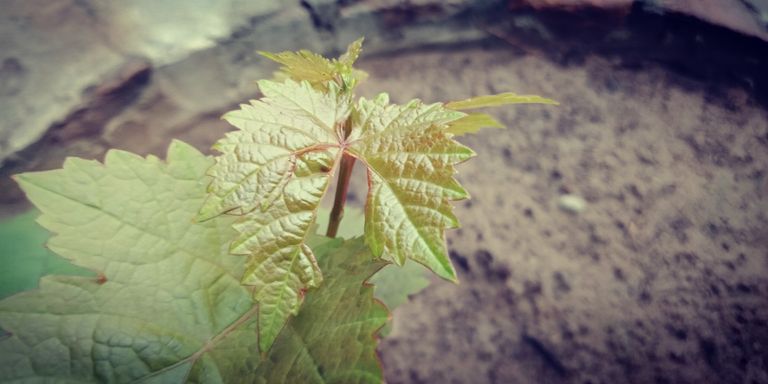
یہ تصاویر انگور کے پودے کی ہیں اور اس وقت نئے پودے تیار کیے جا رہے ہیں اور یہ پاکستان کے صوبہ پنجاب میں سب سے زیادہ کاشت ہونے والا پھل ہے۔ یہ جوان اور بوڑھے سب کا پسندیدہ پھل ہے۔ اس میں بیج نہیں ہوتے۔ یہ بیج کے بغیر پودے ہیں۔ صوبہ پنجاب میں اس پلانٹ کی مانگ میں روز بروز اضافہ ہوتا جا رہا ہے۔
First of all, farmers should be aware that for the best production of any crop, this crop needs a balanced diet which contains various components. Plants obtain most of their food naturally from the earth and the atmosphere. However, due to continuous cultivation of lands and various factors, the availability of food from natural resources for plants is decreasing. This food deficiency is compensated by the use of chemical fertilizers and other crop supplements. Currently, two types of fertilizers are available in the market in our country, one is conventional fertilizers and the other is bio-fertilizers.
Nitrogen, phosphorus, potassium, magnesium, sulphur, calcium, boron, copper (Cu), iron (Fe), manganese (Mn) and zinc (Zn) are essential nutrients for healthy plants. They help in the formation of new cells in the plant which are then incorporated into the plant tissue. Without these nutrients, growth and survival are not possible for long.
The tiny roots that receive the plant's nutrients begin about a foot or a half from the trunk of the plant, extending outwards into the spreading branches around the plant. Young plants are fertilized leaving a one and a half foot area from the stems to the outside of the canopy. The amount and type of fertilizer is determined by plant propagation, plant age, soil fertility, and the acidic or basic characteristics of the soil. Fertilizers should be used keeping in mind the structure of the soil. It is not necessary that one type of fertilizer gives the same result on all types of land.
It is important to water immediately after applying any type of nitrogenous fertilizer, otherwise the benefits of this fertilization will be reduced. In sandy soils, nitrogen fertilizers should be applied in four installments and the rest with phosphorus and potash fertilizers to prevent leaching loss in the soil. should be given in three installments.
;
Fertilizer amounts and application times in medium-fertility soil for a typical young plant!
1st Phase : After harvesting of fruit in soil with basic characteristics in February, March (Nitrophos 1.5Kg to 2Kg or Nitrate 1.5Kg to 2Kg + Single Super Phosphate 2Kg or Zovar (MOP) 1Kg + Sulphate of Potash 0.5Kg to 1Kg per Apply DAP 1Kg + Potash 0.5Kg to 1Kg per plant while on acid mira and sandy soils.
'
;
Second phase: When the fruit becomes pea size in April-May, apply nitrate 1Kg to 1.5Kg or ammonium sulfate 1Kg to 1.5Kg per plant + flood with 2Kg sulfur in case of using micronutrient urea as nitrogenous fertilizer. .
';
;
Third phase: In soils with basic characteristics from September 15 to October 31 (Nitrophos 1.5Kg to 1Kg or Nitrate 1.5Kg to 1Kg + Single Super Phosphate 1.5Kg Zoavar (MOP) 0.5Kg + Nitrate 0.75Kg) + Sulphate of Potash 0.5Kg Give 1Kg per plant while on acid mira and sandy soils give DAP 1Kg + Potash 0.5Kg per plant.
;
Fertilizers should not be applied at the beginning of the rainy season because in case of heavy rainfall, the fertilizers may be leached into the soil and lost.
Flowering depends on plant health and vigor. The more food the plants can store within themselves, the more flowers they will produce the following spring.
ترشاوہ پھلوں کنو، مالٹا، موسمبی، ارلی فروٹر اور گریپ فروٹ کے باغات میں بہتر پیداوار کے حصول کے لئے کھادوں کا استعمال!!
سب سے پہلے تو فارمرز کو ان باتوں سے آگاھی ہونی چاہیئے کہ کسی بھی فصل کی بہترین پیداوار کے لئے اس فصل کو متوازن خوراک کی ضرورت ھوتی ھے جو کہ مختلف اجزاء پر مشتمل ھوتی ھے. پودے اپنی خوراک کا زیادہ حصہ زمیں اور فضاء سے قدرتی طور پر حاصل کرتے ھیں. تاھم زمینوں کی مسلسل کاشت اور مختلف عوامل کی بنا پر پودوں کے لئے قدرتی وسائل سے خوراک کا حصول کم ھوتا جا رھا ھے. اس خوراک کی کمی کو کیمیائی کھادوں اور دیگر کراپ سپلیمنٹ کے استعمال سے پورا کیا جاتا ھے. اس وقت ھمارے ملک میں دو قسم کی کھادیں مارکیٹ میں موجود ھیں ایک روایتی فرٹیلائیزرز اور دوسری بائیو فرٹیلائیزرز.
صحتمند پودوں کے لئے نائٹروجن، فاسفورس، پوٹاشیم، میگنیشیم، سلفر، کیلشیم، بورون، کاپر (Cu)، لوہا (Fe)، مینگنیز (Mn) اور زنک (Zn) ضروری غذائی اجزاء ہیں۔ یہ پودوں میں نئے خلیات بنانے میں مدد کرتے ہیں جو پھر پودوں کی بافتوں میں ڈھل جاتے ہیں۔ ان غذائی اجزاء کے بغیر نشوونما اور بقاء زیادہ دیر تک ممکن نہیں ہو سکتی۔
پودے کی خوراک حاصل کرنے والی چھوٹی چھوٹی جڑیں پودے کے تنے سے ایک یا ڈیڑھ فٹ کا فاصلہ چھوڑ کر شروع ہوتی ہیں، جو پودے کے چاروں طرف کی شاخوں کے پھیلاؤ کے باہر تک پھیلی ہوتی ہیں۔ نوجوان پودوں کے اردگرد تنوں سے ڈیڑھ فٹ رقبہ چھوڑ کر پودے کی چھتری کے گھیرے کے باہر تک کھاد دی جاتی ہے۔ کھاد کی مقدار اور قسم کا تعین پودے کے پھیلاؤ، پودے کی عمر، زمین کی زرخیزی اور زمین کی تیزابی یا اساسی خصوصیات کے مطابق کیا جاتا ہے۔ کھادوں کا استعمال زمیں کی ساخت(سائل سٹرکچر) کو مدنظر رکھ کر کرنا چاہیئے. یہ ضروری نہیں کہ ایک ھی قسم کی کھاد ھر قسم کی زمین پر ایک جیسا ھی رزلٹ دے.
کسی بھی قسم کی نائٹروجنی کھاد دینے کے فوری بعد پانی دینا ضروری ھے ورنہ اس کھاد دینے کے فوائد کم ھو جائیں گے۔ریتلی زمینوں میں کھادوں کو زمین میں لیچ ڈاؤن ضیاع سے بجانے کے لئے نائٹروجن کو چار اقساط اور باقی فاسفورس اور پوٹاش والی کھاد کو تین اقساط میں ڈالنا چاہیئے۔
;
ایک عام جوان پودے کے لئے درمیانی زرخیز زمین میں کھاد کی مقدار اور استعمال کا وقت!
پہلی قسط : پھل کی ھارویسٹنگ کے بعد اساسی خصوصیت کی حامل زمینوں میں فروری، مارچ میں (نائٹروفاس 1.5Kg تا 2Kg یا نائٹریٹ 1.5Kg تا 2Kg + سنگل سپر فاسفیٹ 2Kg یا زوآور (MOP) 1Kg + سلفیٹ آف پوٹاش 0.5Kg تا 1Kg فی پودا دیں جبکہ تیزابی میرا اور ریتلی زمینوں پر DAP 1Kg + پوٹاش 0.5Kg تا 1Kg فی پودا دیں۔
'
;
دوسری قسط : جب اپریل مئی میں پھل مٹر کے دانے جتنا بن جاۓ تو نائٹریٹ 1Kg تا 1.5Kg یا ایمونیم سلفیٹ 1Kg تا 1.5Kg فی پودا استعمال کریں + مائیکرو نیوٹرنس یوریا کو بطور نائٹروجنی کھاد کے استعمال کی صورت میں 2Kg سلفر کے ساتھ فلڈ کریں۔
';
;
تیسری قسط : اساسی خصوصیت کی حامل زمینوں میں 15 ستمبر سے 31 اکتوبر تک (نائٹروفاس 1.5Kg تا 1Kg یا نائٹریٹ 1.5Kg تا 1Kg + سنگل سپر فاسفیٹ 1.5Kg زوآور (MOP) 0.5Kg +نائٹریٹ 0.75Kg ) + سلفیٹ آف پوٹاش 0.5Kg تا 1Kg فی پودا دیں جبکہ تیزابی میرا اور ریتلی زمینوں پر DAP 1Kg + پوٹاش 0.5Kg فی پودا دیں۔
;
برسات کے شروع میں کھاد نہیں دی جانی چاہیئے کیونکہ زیادہ بارش کی صورت میں کھادیں زمین میں لیچ ڈاؤن ھو کر ضائع ھو سکتی ہیں۔
پھولوں کا انحصار پودوں کی صحت اور.طاقت پر منحصر ہوتا ہے۔ پودے جتنی زیادہ خوراک حاصل کر کے اپنے اندر سٹور رکھیں گے، اتنی زیادہ مقدار میں اگلے موسم بہار میں پھول لائیں گے۔
Today my diary and information about fruit plants

The pepper plant is now three years old and after one year it will start bearing fruit as it bears its first fruit after at least four years. A lot of hard work has been developed for this plant. During rains it becomes a bit difficult to handle because its branches and leaves are heavy and the weight increases due to raindrops. Draw pictures of plants.


کالی مرچ کا پودا اب تین سال کا ہو چکا ہے اور ایک سال کے بعد پھل دینا شروع کر دے گا کیونکہ یہ کم از کم چار سال بعد پہلا پھل دیتا ہے۔
اس پلانٹ کے لیے بہت محنت کی گئی ہے۔ بارش کے دوران اسے سنبھالنا قدرے مشکل ہو جاتا ہے کیونکہ اس کی شاخیں اور پتے بھاری ہوتے ہیں اور بارش کی بوندوں سے وزن بڑھ جاتا ہے۔ پودوں کی تصویریں بنائیں
Red Henna
It is a red colored henna plant, its leaves are similar in shape to black pepper leaves, its leaves are dried to make henna, which is mostly used in wedding ceremonies and it is pure henna. It is because it does not contain any kind of adulteration and is prepared from natural plant leaves. We have used henna prepared from this plant many times and it is very popular.


یہ ایک سرخ رنگ کا مہندی کا پودا ہے، اس کے پتے کالی مرچ کے پتوں سے ملتے جلتے ہیں، اس کے پتوں کو مہندی بنانے کے لیے خشک کیا جاتا ہے، جو زیادہ تر شادی بیاہ کی تقریبات میں استعمال ہوتا ہے اور یہ خالص مہندی ہے۔ اس کی وجہ یہ ہے کہ اس میں کسی قسم کی ملاوٹ نہیں ہوتی اور یہ قدرتی پودوں کے پتوں سے تیار کی جاتی ہے۔ ہم نے اس پودے سے تیار ہونے والی مہندی کو کئی بار استعمال کیا ہے اور یہ بہت مشہور ہے۔
Damson
This is a small plant of Aloo Bukhara. Next month, in the second week of July, it will be two years old. Alhamdulillah, this plant has been transplanted with a very high quality. This time, the first fruit was produced on it from the top of the plant. The main feature is that this is the only type of potato plant whose fruit is sweet and juicy even when raw. Otherwise, most of the potatoes are cut and sour even when they are ripe. God willing, it will bear fruit again in winter.


یہ آلو بخارا کا چھوٹا سا پودا ہے۔ اگلے ماہ جولائی کے دوسرے ہفتے میں دو سال کا ہو جائے گا۔ الحمدللہ یہ پودا بہت اعلیٰ معیار کے ساتھ لگایا گیا ہے۔ اس بار پودے کے اوپر سے اس پر پہلا پھل آیا۔ اہم خصوصیت یہ ہے کہ یہ آلو کے پودے کی واحد قسم ہے جس کا پھل کچا ہونے کے باوجود میٹھا اور رسیلا ہوتا ہے۔ ورنہ زیادہ تر آلو پکنے پر بھی کٹے اور کھٹے ہوتے ہیں۔ انشاء اللہ سردیوں میں دوبارہ پھل آئے گا۔
Guava
This is a native guava plant, its fruit is similar to the shape of a sarahi and inside its fruit is red in color. This plant has also reached the age of two years and this plant was only seven months old when it started bearing fruit. Often the fruit is eaten before it is ripe because children like to eat guava fruit. The pictures of this plant are also taken during the rainy season.


یہ امرود کا دیسی پودا ہے، اس کا پھل سراہی کی شکل کا ہوتا ہے اور اس کے پھل کے اندر سرخی مائل ہوتی ہے۔
یہ پودا بھی دو سال کی عمر کو پہنچ چکا ہے اور یہ پودا صرف سات ماہ کا تھا جب اس نے پھل دینا شروع کیا۔
اکثر پھل کو پکنے سے پہلے کھا لیا جاتا ہے کیونکہ بچے امرود کا پھل کھانا پسند کرتے ہیں۔ اس پودے کی تصاویر بھی برسات کے موسم میں لی گئی ہیں۔
Peaches 🍑🍑 are a rare gift they are mostly found in hilly and green areas. Last year my friend gifted me this peach plant. The fruit was definitely less, but peaches with the shape and size of apples grew on it, and the height of this plant is only five feet, but seeing the fruits on top of it, one is surprised that it is not an imitation plant, but Alhamdulillah this is a real plant and I like it very much.


آڑو 🍑🍑 ایک نایاب تحفہ ہے جو زیادہ تر پہاڑی اور سر سبز علاقوں میں پایا جاتا ہے۔ پچھلے سال میرے دوست نے مجھے یہ آڑو کا پودا تحفے میں دیا تھا۔ پھل ضرور کم تھا لیکن اس پر سیب کی شکل اور جسامت کے ساتھ آڑو اگ گیا اور اس پودے کی اونچائی صرف پانچ فٹ ہے لیکن اس کے اوپر پھل دیکھ کر حیران رہ جاتا ہے کہ یہ کوئی نقلی پودا تو نہیں، لیکن الحمدللہ یہ ایک حقیقی پودا ہے اور مجھے یہ بہت پسند ہے۔
Grapes
These pictures are of the grape plant and new plants are being developed at the moment and it is the most cultivated fruit in the Punjab province of Pakistan. It is the favorite fruit of all the young and old. It does not contain seeds. These are seedless plants. The demand of this plant is increasing day by day in the province of Punjab.


یہ تصاویر انگور کے پودے کی ہیں اور اس وقت نئے پودے تیار کیے جا رہے ہیں اور یہ پاکستان کے صوبہ پنجاب میں سب سے زیادہ کاشت ہونے والا پھل ہے۔ یہ جوان اور بوڑھے سب کا پسندیدہ پھل ہے۔ اس میں بیج نہیں ہوتے۔ یہ بیج کے بغیر پودے ہیں۔ صوبہ پنجاب میں اس پلانٹ کی مانگ میں روز بروز اضافہ ہوتا جا رہا ہے۔
First of all, farmers should be aware that for the best production of any crop, this crop needs a balanced diet which contains various components. Plants obtain most of their food naturally from the earth and the atmosphere. However, due to continuous cultivation of lands and various factors, the availability of food from natural resources for plants is decreasing. This food deficiency is compensated by the use of chemical fertilizers and other crop supplements. Currently, two types of fertilizers are available in the market in our country, one is conventional fertilizers and the other is bio-fertilizers.
Nitrogen, phosphorus, potassium, magnesium, sulphur, calcium, boron, copper (Cu), iron (Fe), manganese (Mn) and zinc (Zn) are essential nutrients for healthy plants. They help in the formation of new cells in the plant which are then incorporated into the plant tissue. Without these nutrients, growth and survival are not possible for long.
The tiny roots that receive the plant's nutrients begin about a foot or a half from the trunk of the plant, extending outwards into the spreading branches around the plant. Young plants are fertilized leaving a one and a half foot area from the stems to the outside of the canopy. The amount and type of fertilizer is determined by plant propagation, plant age, soil fertility, and the acidic or basic characteristics of the soil. Fertilizers should be used keeping in mind the structure of the soil. It is not necessary that one type of fertilizer gives the same result on all types of land.
It is important to water immediately after applying any type of nitrogenous fertilizer, otherwise the benefits of this fertilization will be reduced. In sandy soils, nitrogen fertilizers should be applied in four installments and the rest with phosphorus and potash fertilizers to prevent leaching loss in the soil. should be given in three installments.
;
Fertilizer amounts and application times in medium-fertility soil for a typical young plant!
1st Phase : After harvesting of fruit in soil with basic characteristics in February, March (Nitrophos 1.5Kg to 2Kg or Nitrate 1.5Kg to 2Kg + Single Super Phosphate 2Kg or Zovar (MOP) 1Kg + Sulphate of Potash 0.5Kg to 1Kg per Apply DAP 1Kg + Potash 0.5Kg to 1Kg per plant while on acid mira and sandy soils.
'
;
Second phase: When the fruit becomes pea size in April-May, apply nitrate 1Kg to 1.5Kg or ammonium sulfate 1Kg to 1.5Kg per plant + flood with 2Kg sulfur in case of using micronutrient urea as nitrogenous fertilizer. .
';
;
Third phase: In soils with basic characteristics from September 15 to October 31 (Nitrophos 1.5Kg to 1Kg or Nitrate 1.5Kg to 1Kg + Single Super Phosphate 1.5Kg Zoavar (MOP) 0.5Kg + Nitrate 0.75Kg) + Sulphate of Potash 0.5Kg Give 1Kg per plant while on acid mira and sandy soils give DAP 1Kg + Potash 0.5Kg per plant.
;
Fertilizers should not be applied at the beginning of the rainy season because in case of heavy rainfall, the fertilizers may be leached into the soil and lost.
Flowering depends on plant health and vigor. The more food the plants can store within themselves, the more flowers they will produce the following spring.
ترشاوہ پھلوں کنو، مالٹا، موسمبی، ارلی فروٹر اور گریپ فروٹ کے باغات میں بہتر پیداوار کے حصول کے لئے کھادوں کا استعمال!!
سب سے پہلے تو فارمرز کو ان باتوں سے آگاھی ہونی چاہیئے کہ کسی بھی فصل کی بہترین پیداوار کے لئے اس فصل کو متوازن خوراک کی ضرورت ھوتی ھے جو کہ مختلف اجزاء پر مشتمل ھوتی ھے. پودے اپنی خوراک کا زیادہ حصہ زمیں اور فضاء سے قدرتی طور پر حاصل کرتے ھیں. تاھم زمینوں کی مسلسل کاشت اور مختلف عوامل کی بنا پر پودوں کے لئے قدرتی وسائل سے خوراک کا حصول کم ھوتا جا رھا ھے. اس خوراک کی کمی کو کیمیائی کھادوں اور دیگر کراپ سپلیمنٹ کے استعمال سے پورا کیا جاتا ھے. اس وقت ھمارے ملک میں دو قسم کی کھادیں مارکیٹ میں موجود ھیں ایک روایتی فرٹیلائیزرز اور دوسری بائیو فرٹیلائیزرز.
صحتمند پودوں کے لئے نائٹروجن، فاسفورس، پوٹاشیم، میگنیشیم، سلفر، کیلشیم، بورون، کاپر (Cu)، لوہا (Fe)، مینگنیز (Mn) اور زنک (Zn) ضروری غذائی اجزاء ہیں۔ یہ پودوں میں نئے خلیات بنانے میں مدد کرتے ہیں جو پھر پودوں کی بافتوں میں ڈھل جاتے ہیں۔ ان غذائی اجزاء کے بغیر نشوونما اور بقاء زیادہ دیر تک ممکن نہیں ہو سکتی۔
پودے کی خوراک حاصل کرنے والی چھوٹی چھوٹی جڑیں پودے کے تنے سے ایک یا ڈیڑھ فٹ کا فاصلہ چھوڑ کر شروع ہوتی ہیں، جو پودے کے چاروں طرف کی شاخوں کے پھیلاؤ کے باہر تک پھیلی ہوتی ہیں۔ نوجوان پودوں کے اردگرد تنوں سے ڈیڑھ فٹ رقبہ چھوڑ کر پودے کی چھتری کے گھیرے کے باہر تک کھاد دی جاتی ہے۔ کھاد کی مقدار اور قسم کا تعین پودے کے پھیلاؤ، پودے کی عمر، زمین کی زرخیزی اور زمین کی تیزابی یا اساسی خصوصیات کے مطابق کیا جاتا ہے۔ کھادوں کا استعمال زمیں کی ساخت(سائل سٹرکچر) کو مدنظر رکھ کر کرنا چاہیئے. یہ ضروری نہیں کہ ایک ھی قسم کی کھاد ھر قسم کی زمین پر ایک جیسا ھی رزلٹ دے.
کسی بھی قسم کی نائٹروجنی کھاد دینے کے فوری بعد پانی دینا ضروری ھے ورنہ اس کھاد دینے کے فوائد کم ھو جائیں گے۔ریتلی زمینوں میں کھادوں کو زمین میں لیچ ڈاؤن ضیاع سے بجانے کے لئے نائٹروجن کو چار اقساط اور باقی فاسفورس اور پوٹاش والی کھاد کو تین اقساط میں ڈالنا چاہیئے۔
;
ایک عام جوان پودے کے لئے درمیانی زرخیز زمین میں کھاد کی مقدار اور استعمال کا وقت!
پہلی قسط : پھل کی ھارویسٹنگ کے بعد اساسی خصوصیت کی حامل زمینوں میں فروری، مارچ میں (نائٹروفاس 1.5Kg تا 2Kg یا نائٹریٹ 1.5Kg تا 2Kg + سنگل سپر فاسفیٹ 2Kg یا زوآور (MOP) 1Kg + سلفیٹ آف پوٹاش 0.5Kg تا 1Kg فی پودا دیں جبکہ تیزابی میرا اور ریتلی زمینوں پر DAP 1Kg + پوٹاش 0.5Kg تا 1Kg فی پودا دیں۔
'
;
دوسری قسط : جب اپریل مئی میں پھل مٹر کے دانے جتنا بن جاۓ تو نائٹریٹ 1Kg تا 1.5Kg یا ایمونیم سلفیٹ 1Kg تا 1.5Kg فی پودا استعمال کریں + مائیکرو نیوٹرنس یوریا کو بطور نائٹروجنی کھاد کے استعمال کی صورت میں 2Kg سلفر کے ساتھ فلڈ کریں۔
';
;
تیسری قسط : اساسی خصوصیت کی حامل زمینوں میں 15 ستمبر سے 31 اکتوبر تک (نائٹروفاس 1.5Kg تا 1Kg یا نائٹریٹ 1.5Kg تا 1Kg + سنگل سپر فاسفیٹ 1.5Kg زوآور (MOP) 0.5Kg +نائٹریٹ 0.75Kg ) + سلفیٹ آف پوٹاش 0.5Kg تا 1Kg فی پودا دیں جبکہ تیزابی میرا اور ریتلی زمینوں پر DAP 1Kg + پوٹاش 0.5Kg فی پودا دیں۔
;
برسات کے شروع میں کھاد نہیں دی جانی چاہیئے کیونکہ زیادہ بارش کی صورت میں کھادیں زمین میں لیچ ڈاؤن ھو کر ضائع ھو سکتی ہیں۔
پھولوں کا انحصار پودوں کی صحت اور.طاقت پر منحصر ہوتا ہے۔ پودے جتنی زیادہ خوراک حاصل کر کے اپنے اندر سٹور رکھیں گے، اتنی زیادہ مقدار میں اگلے موسم بہار میں پھول لائیں گے۔
¡Queremos leerte!
Entra y publica tus artículos con nosotros.
Vota por el witness @cosmicboy123